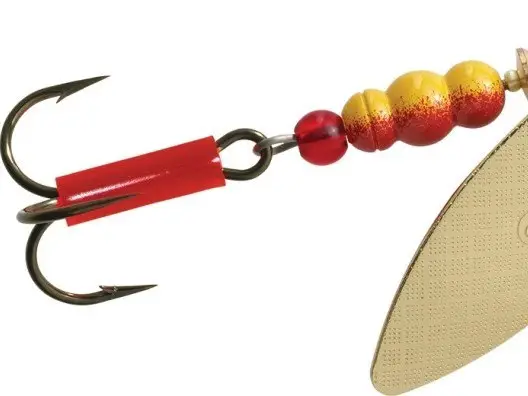Why do some treble hooks on lures come with a small piece of plastic tube over the shank of the hook?
The main purpose of the plastic tube on treble hooks is decorative. Some fishermen also believe it provides a ‘hot spot’ that fish can concentrate when going in for the strike. Additionally, if the tubing is pulled up and over the eye of the hook it can force the hook to travel directly behind the body of the lure.
This tubing is usually red, but can at times be clear, orange, yellow, or basically any color. Sometimes it glows in the dark or even offers increased UV.
This tubing serves two claimed purposes. I write claimed purposes because I personally believe it is only there for decoration. It makes next to no difference with regards to lure action, or the likelihoods to generate strikes.
I make this claim, because I have replaced countless treble hooks over the year, and I notice no difference in the relative performance or fish catching ability.
Additionally, out of all of the major spinner and lure companies, Mepps is the only company that includes the tubing on a few of their spinner. The likes of Panther Martin, Blue Fox and Roostertail do not place tubing on bare hook shanks.
I will now discuss the two claimed benefits, firstly a quote from the product description of the tubing.
1) The tubing acts as a ‘hot spot’ that can trigger an interested fish into striking.
This first reason is quite straightforward. It is claimed that the little piece of plastic tube can trigger the fish’s urge to strike. The red tubing does look like blood after all.
Sometimes, manufacturers use a little bead instead. I suppose a bead could represent an eye or even an egg.
But like I have mentioned in the introduction, I have replaced plenty of treble hooks with bare shank alternatives and have not noticed any difference with regards to catch rate. It does not hurt, but it does not really help either.
To reinforce my view, the manufacturers that make the ‘hot spot’ trigger claim do not even include the tubing on all their lures. If it was such an effective trigger it will certainly be used on more lures.
They also sometimes use a clear tubing, rather than colored. That clear tubing is not going to act as a hot spot for fish strike triggers so this first claimed benefit is superficial at best.
2) The tubing stiffens the hook to make the hook swim straight behind the lure.
Again, this sounds more like a dubious benefit than an actual one. The forward momentum of the lure automatically forces the hook to swim directly behind. I really struggle to see what difference a little piece of plastic tubing is going to make, or what benefit a rigid hook has over a more mobile one.
Okay, I accept that salmon do have slightly tougher mouths than trout, so require a harder strike to set the hook, and a rigid hook potentially does set slightly more effectively than a rigid one which theoretically could jerk out of the way. But this is truly a case of splitting hairs, the difference is minuscule.
A secondary benefit is that by forcing the tubing over the connection, it makes the hook much less flexible. This reduces the chance of the lure accidentally hooking itself. So could come in handy, when jigging or bouncing the lure through the water.
3) It protects a dressed hook
These little plastic tubes serve one final purpose, some lure makers use them to better secure the fibres used to dress a hook.
It is possible to slide the tube over a small amount of bucktail or flash fibre to better secure it in plastic.

